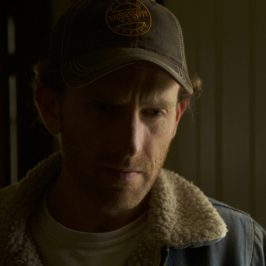How many times have you auditioned an actor who hands you a resume with little to no acting credits? Although I used to be afraid of casting anyone without experience, these days, I am as open to casting an actor with zero credits on their resume (or no resume at all) as I am an experienced one.

‘As a filmmaker, you have the chance to guide this person through their debut performance.’ Illustration by Josh Quick
Over the years, I saw the benefits of working with first-time actors. For one, these budding thespians don’t have bad habits. Most likely, they have no habits at all associated with their craft because they haven’t developed it yet. That means they are moldable and might be more open to suggestion than an actor set in his or her ways. I’ve encountered many experienced actors, well-versed in one “method” or another, who are resistant to direction and suggestion. First-time actors are flexible and therefore can actually be easier to work with.
Secondly, sometimes it’s necessary to cast inexperienced actors because of the project’s limitations. Anyone working on a low-budget or making their first few movies must be open to working with people of all experience levels. Everyone needs a start, so while you’re getting yours, you may need to work with others who are trying to get their foot in the door.
But it’s not just about necessity; casting first-time actors is incredibly rewarding. As a filmmaker, you have the chance to guide this person through their debut performance. You will see them go from 0 to 100 in their creative journey. I’ve cast many first-time actors in my projects and time and time again it has proven to be a positive, fulfilling experience for all involved.
Here are some basic tips for working with first-time actors in your film project:
1. Screen Confidence
A big part of giving a successful performance is being confident on-screen, or comfortable in front of the camera. Many of these new actors who are just starting out may have never had a camera pointed at them. It will also be the first time most of them have memorized lines or heard “action” and “cut.” All of this can be quite intimidating.
First, I disarm the tension. I’ll say, “Just be yourself,” or “Acting is just being yourself on screen.” And there is much truth to this. Think about it, most movie stars who have an incredible screen presence are just playing variations of themselves. Letting these first-timers know they don’t have to be anything but who they already are will automatically make them feel more at ease.
Once the work on set begins, they need to be allowed the time and patience to build confidence with each take. Don’t lie to them, but find little things to compliment. “I really like the way you said that line” or “You looked great when you did ____, now how about we try ____ too.” It’s simple but effective. Treat every step forward as a victory. Suddenly, you will see these folks transform on camera.
On my recent feature, Son of a Gun, I worked with several novice performers. One woman hadn’t even thought about acting before she walked into the audition. I cast her as the female lead in the picture, which was quite a risk, but the most important thing was to stay confident in her ability. This, in turn, gave her the confidence to progress and by the end of the production, she could stand toe to toe with any actor on set.
2. Line Readings
Giving an actor a “line reading,” or saying the line for them, has long been considered controversial in the film industry. However, I find it to be a highly effective and productive tool, especially with a first-time actor.
Although hesitant to use this tactic, a couple of my mentors suggested that line readings do have a time and place. Once I started to implement line readings, I saw the value and effectiveness they could offer if done correctly. It’s important to explain to the actor upfront, “I’m not telling you how to say the line, I’m just showing you how I would do it so you might take something from my voice and actions.” Like explaining that being yourself is most important on camera, a statement like this disarms the situation. As a director, I then play through the scene, focused on showing the actor the right tone and emotion.
Many times, especially with novice actors, I’ve done five or six takes trying to describe the emotion or the meaning of the dialog, only to finally play through it for them and see a major breakthrough afterward. You wouldn’t do this with Gene Hackman or Meryl Streep, but a first-time actor isn’t trained to access their emotions like a professional and extra tools are often necessary for their success in a film.
3. Create a Safe Environment
This relates to making the rookie performer comfortable, but it’s about much more than just the two of you. For instance, is it a good idea to pair a first-timer with a seasoned professional in the same scene? You would think not, but this can sometimes have fantastic results. It’s all about the context of that pairing. I find it helpful to explain to the professional who they’re working with and that this is going to be a different experience than he or she might be used to. With this knowledge, the experienced actor will often lend themselves to the situation, even becoming an additional coach, which can often be good as long as it doesn’t lead to mixed messages for the new performer.
The crew also needs to be prepared. On that same film, Son of a Gun, I remember how my entire crew turned to me with shock and concern after the first take from one of our first-timers. I made the mistake of not creating the right environment and letting them know this was something I anticipated and planned to work through. Thanks to their professionalism, the crew was patient and did not reveal their doubts to the actor. If they had, that person might have been too discouraged to recover. With gradual progress, the scene eventually turned into a fully realized and powerful performance.
While working with actor Tom Sizemore on Durant’s Never Closes, he shared something I’ve never forgotten: “Never let an actor know you don’t believe they can do it. They must always feel that you believe in them.” He said if a director turns his or her back on an actor and expresses this doubt, whether it’s Brad Pitt or someone cast right off the street, the actor will not have the faith they need to accomplish the work.
Since that moment, I have done my best to always believe in every actor, despite their level of experience, and I have yet to be let down.
